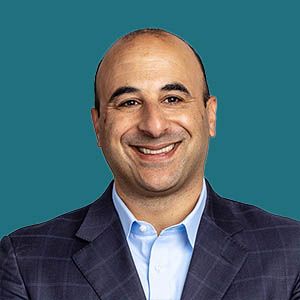Neurona’s Focal Epilepsy Cell Therapy NRTX-1001 Garners FDA RMAT Designation
NRTX-1001 consists of human interneurons that provide long-term secretion of gamma-aminobutyric acid, an inhibitory neurotransmitter, which is expected to repair neural networks.
Cory R. Nicholas, PhD

Neurona Therapeutics’ NRTX-1001, an investigational allogeneic regenerative neural cell therapy intended to treat drug-resistant mesial temporal lobe epilepsy (MTLE), has been granted regenerative medicine advanced therapy (RMAT) designation by the FDA.1
NRTX-1001 consists of human interneurons that provide long-term secretion of gamma-aminobutyric acid, an inhibitory neurotransmitter, which is expected to repair neural networks. It is currently being evaluated in a phase 1/2 clinical trial (NCT05135091) for the treatment of drug-resistant unilateral MTLE, which is in the midst of treating patients, and a separate phase 1/2 clinical trial (NCT06422923) for patients with drug-resistant bilateral MTLE, which has not yet begun recruiting patients according to its clinicaltrials.gov page, which was most recently updated on May 31, 2024.
“We’re pleased the FDA has recognized the potential of NRTX-1001, and we see the RMAT designation as validating both our positive initial data as well as our novel regenerative approach to treating focal epilepsy,” Cory R. Nicholas, PhD, the cofounder and CEO of Neurona Therapeutics, said in a statement.1 “In the near-term, we are focused on completing the ongoing phase 1/2 study [in unilateral MTLE] and engaging with the FDA to discuss our product development plan. The Neurona team is committed to bringing our cell therapy to people living with drug-resistant focal epilepsy as safely and expeditiously as possible.”
Earlier this year, interim data from the unilateral MTLE trial was presented at the American Academy of Neurology (AAN) 2024 Annual Meeting, held from April 13 to 18, 2024, in Denver, CO.2 Among 5 patients treated in the study’s lower dose cohort, 4 patients experienced a reduction from baseline in seizures of 50% or more in the first 6 months posttreatment. Furthermore, a patient with 16 months of follow-up and a patient with 21 months of follow-up both experienced seizure reductions of more than 95% from baseline and scored higher on their quality-of-life assessments than at baseline. Neurona also noted that after treatment 3 of the 5 patients had achieved freedom from their most debilitating seizure type.
“The emerging data demonstrate that administration of NRTX-1001 is well-tolerated and has the potential to significantly reduce seizure frequency,” John Hixson, MD, the senior medical director at Neurona, said in an April 2024, statement.2 “We are very encouraged by the data from these first subjects, who continue to exhibit durable seizure suppression for up to 21 months post-administration. Unlike lobectomy surgery, which poses serious cognitive risks due to brain tissue destruction, NRTX-1001 potentially represents a regenerative cell therapy approach aimed at restoring balanced neural activity without compromising cognitive function. Notably, the first 5 subjects have not demonstrated deficits from baseline on neuropsychological or quality-of-life tests, and some test scores have increased from baseline, after NRTX-1001 administration.”
In December 2023, CGTLive® interviewed Nicholas about NRTX-1001. He described the cell therapy in more detail and also spoke about future plans for the product, which may eventually include evaluation in more types of epilepsy and even Alzheimer disease.
“Neurona Therapeutics has developed a first cell therapy derived from human stem cells for a regenerative alternative to treat drug-resistant epilepsies where there's a clear origin of these seizures—what's called focal-onset epilepsy, where we know where the seizures start,” Nicholas told CGTLive. “The idea here is that NRTX-1001 is designed to put back the cells that are damaged in that part of the brain where the seizures start.”